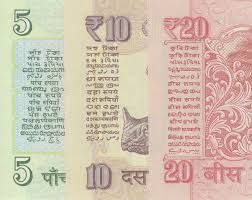Understanding Culture Il-Language
Jun 14, 2019 • 13 views
"Kos Kos par badle paani, char kos par Baani”(The water changes at every mile and the language changes after every four miles). This saying aptly encaptures the diversity in the languages used in India. Within the same country, the language(or its dialect) changes from region to region. The constitution of India recognizes 22 official languages. On a ten-rupee note itself, one can find 15 different languages listed in the Eighth Schedule of the Indian Constitution apart from Hindi and English. These languages are- Assamese, Bengali,Kannada,Kashmiri, Konkani, Malayalam, Marathi, Nepali, Oriya, Punjabi, Sanskrit, Tamil, Telugu and Urdu.

SiSince there is a lot of borrowing in languages, just like in food, one can find similar words in two completely different languages. Also, the same word can have different meanings in various languages. For example-. The proverb “It’s dark under the lamp” (dipada kelage kattale, in Kannada) has been collected in Kannada and Kashmiri, at the opposite ends of India. The sentence is the same in each place but is used in a different sense to mean something else. While in Kannada it means that a virtuous man, may have dark hidden vices. On the other hand, In Kashmiri, it’s used in a political sense to mean that a good-natured king may have evil counsellors.[1]
Hindi is not only one of the most widely spoken languages, but also the lingua franca of this multilingual country. There are several dialects of Hindi as well, such as Awadhi, Bhojpuri or Braj Bhasha, Haryanvi, Rajasthani, Mewari and so on. This implies that the Hindi spoken in two different areas within the same country can have variations. For example, my hometown is in Uttar Pradesh, which falls under the Hindi-speaking belt. However, the kind of Hindi spoken in my city is a bit different from the kind spoken in neighbouring cities. There is a usage of words and phrases which a non-resident of the city might not be able to comprehend. On the other hand, my friend is from Uttarakhand, which also falls in the category of Hindi-speaking region, however, the Hindi spoken there is different from that spoken in our part, it’s called“Pahadi-Hindi. Thus, it can be seen that at this rate at which language diverses, a question of standardization cannot even arise.

Although languages do run the risk of getting standardized in the sense that many minority languages maybe classified as a dialect of Hindi. However more than a standard, language is a matter of cultural identity. For example, the Tamils, who in spite of living in a Hindi-dominated country are very proud of their language. For it is a language which is next to Sanskrit in antiquity or the oldest of the modern Indian language. And it is only because languages have an independent status and are not standardized under any one language that they can act as markers of culture and its richness.
[1]Ramanujan,A.K.Who needs Folklore?pg5
